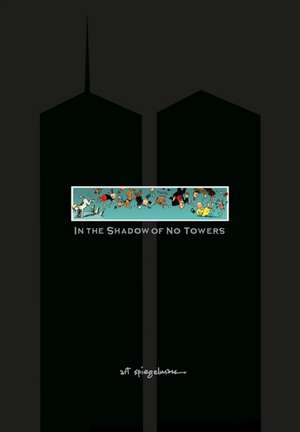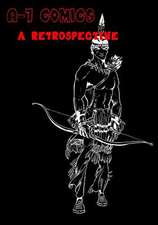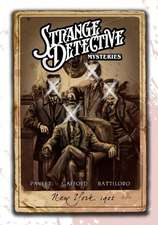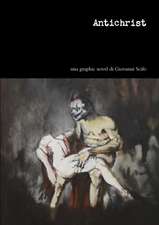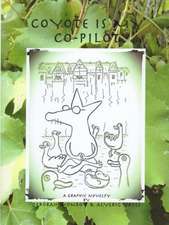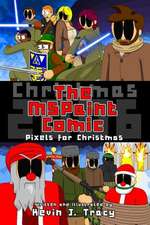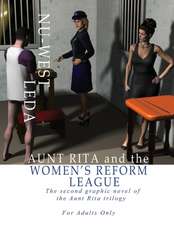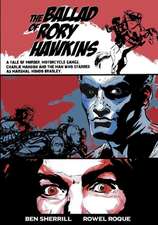In the Shadow of No Towers: An Isabel Dalhousie Novel: Pantheon Graphic Library
Autor Art Spiegelmanen Limba Engleză Hardback – 31 aug 2004
Spiegelman and his family bore witness to the attacks in their lower Manhattan neighborhood: his teenage daughter had started school directly below the towers days earlier, and they had lived in the area for years. But the horrors they survived that morning were only the beginning for Spiegelman, as his anguish was quickly displaced by fury at the U.S. government, which shamelessly co-opted the events for its own preconceived agenda.
He responded in the way he knows best. In an oversized, two-page-spread format that echoes the scale of the earliest newspaper comics (which Spiegelman says brought him solace after the attacks), he relates his experience of the national tragedy in drawings and text that convey—with his singular artistry and his characteristic provocation, outrage, and wit—the unfathomable enormity of the event itself, the obvious and insidious effects it had on his life, and the extraordinary, often hidden changes that have been enacted in the name of post-9/11 national security and that have begun to undermine the very foundation of American democracy.
| Toate formatele și edițiile | Preț | Express |
|---|---|---|
| Hardback (2) | 241.61 lei 24-30 zile | +102.26 lei 4-10 zile |
| Penguin Books – 2 sep 2020 | 241.61 lei 24-30 zile | +102.26 lei 4-10 zile |
| Pantheon Books – 31 aug 2004 | 438.10 lei 17-23 zile | +40.43 lei 4-10 zile |
Din seria Pantheon Graphic Library
-
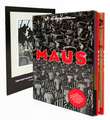 Preț: 101.61 lei
Preț: 101.61 lei -
 Preț: 194.12 lei
Preț: 194.12 lei -
 Preț: 79.14 lei
Preț: 79.14 lei -
 Preț: 187.77 lei
Preț: 187.77 lei -
 Preț: 189.64 lei
Preț: 189.64 lei -
 Preț: 189.40 lei
Preț: 189.40 lei -
 Preț: 230.82 lei
Preț: 230.82 lei -
 Preț: 98.82 lei
Preț: 98.82 lei -
 Preț: 140.69 lei
Preț: 140.69 lei -
 Preț: 209.51 lei
Preț: 209.51 lei -
 Preț: 159.64 lei
Preț: 159.64 lei -
 Preț: 216.68 lei
Preț: 216.68 lei - 21%
 Preț: 135.35 lei
Preț: 135.35 lei -
 Preț: 139.32 lei
Preț: 139.32 lei -
 Preț: 225.68 lei
Preț: 225.68 lei -
 Preț: 154.04 lei
Preț: 154.04 lei
Preț: 438.10 lei
Nou
Puncte Express: 657
Preț estimativ în valută:
83.84€ • 87.21$ • 69.22£
83.84€ • 87.21$ • 69.22£
Carte disponibilă
Livrare economică 20-26 martie
Livrare express 07-13 martie pentru 50.42 lei
Preluare comenzi: 021 569.72.76
Specificații
ISBN-13: 9780375423079
ISBN-10: 0375423079
Pagini: 42
Ilustrații: FULL-COLOR DRAWINGS THROUGHOUT
Dimensiuni: 254 x 366 x 23 mm
Greutate: 1.37 kg
Editura: Pantheon Books
Colecția Pantheon Books
Seria Pantheon Graphic Library
ISBN-10: 0375423079
Pagini: 42
Ilustrații: FULL-COLOR DRAWINGS THROUGHOUT
Dimensiuni: 254 x 366 x 23 mm
Greutate: 1.37 kg
Editura: Pantheon Books
Colecția Pantheon Books
Seria Pantheon Graphic Library
Notă biografică
Art Spiegelman is cofounder/editor of Raw, the acclaimed magazine of avant-garde comics and graphics. From 1992 to 2002, he was a staff artist and writer for The New Yorker, which published his powerful black-on-black 9/11 cover a few days after the event. His drawings and prints have been exhibited in museums and galleries throughout the world. Maus received the Pulitzer Prize and was nominated for the National Book Critics Circle Award. Spiegelman lives in New York City with his wife, Françoise Mouly, and their two children.
Extras
Please note: The following is a section from the introduction to In the Shadow of No Towers. You may view spreads from book at: http://www.pantheonbooks.com/graphicnovels/towers.html.
The Sky Is Falling!
I tend to be easily unhinged. Minor mishaps–a clogged drain, running late for an appointment–send me into a sky-is-falling tizzy. It’s a trait that can leave one ill-equipped for coping with the sky when it actually falls. Before 9/11 my traumas were all more or less self-inflicted, but outrunning the toxic cloud that had moments before been the north tower of the World Trade Center left me reeling on that faultline where World History and Personal History collide–the intersection my parents, Auschwitz survivors, had warned me about when they taught me to always keep my bags packed.
It took a long time to put the burning towers behind me. Personal history aside, zip codes seemed to have something to do with the intensity of response. Long after uptown New Yorkers resumed their daily jogging in Central Park, those of us living in Lower Manhattan found our neighborhood transformed into one of those suburban gated communities as we flashed IDs at the police barriers on 14th Street before being allowed to walk home. Only when I traveled to a university in the Midwest in early October 2001 did I realize that all New Yorkers were out of their minds compared to those for whom the attack was an abstraction. The assault on the Pentagon confirmed that the carnage in New York City was indeed an attack on America, not one more skirmish on foreign soil. Still, the small town I visited in Indiana–draped in flags that reminded me of the garlic one might put on a door to ward off vampires–was at least as worked up over a frat house’s zoning violations as with threats from "raghead terrorists." It was as if I’d wandered into an inverted version of Saul Steinberg’s famous map of America seen from Ninth Avenue, where the known world ends at the Hudson; in Indiana everything east of the Alleghenies was very, very far away.
One of my near-death realizations as the dust first settled on Canal Street was the depth of my affection for the chaotic neighborhood that I can honestly call home. Allegiance to this unmelted nugget in the melting pot is as close as I comfortably get to patriotism. I wasn’t able to imagine myself leaving my city for safety in, say, the south of France, then opening my Herald Tribune at some café to read that New York City had been turned into radioactive rubble. The realization that I’m actually a "rooted" cosmopolitan is referred to in the fourth of the No Towers comix pages that follow, but the unstated epiphany that underlies all the pages is only implied: I made a vow that morning to return to making comix full-time despite the fact that comix can be so damn labor intensive that one has to assume that one will live forever to make them.
In those first few days after 9/11 I got lost constructing conspiracy theories about my government’s complicity in what had happened that would have done a Frenchman proud. (My susceptibility for conspiracy goes back a long ways but had reached its previous peak after the 2000 elections.) Only when I heard paranoid Arab Americans blaming it all on the Jews did I reel myself back in, deciding it wasn’t essential to know precisely how much my "leaders" knew about the hijackings in advance–it was sufficient that they immediately instrumentalized the attack for their own agenda. While I was going off the deep end in my studio, my wife, Françoise, was out impersonating Joan of Arc–finding temporary shelter for Tribeca friends who’d been rendered homeless, sneaking into the cordoned-off areas to bring water to rescue workers and even, as art editor of The New Yorker, managing to wrest a cover image from me, a black-on-black afterimage of the towers published six days after the attack.
I’d spent much of the decade before the millennium trying to avoid making comix, but from some time in 2002 till September 2003 I devoted myself to what became a series of ten large-scale pages about September 11 and its aftermath. It was originally going to be a weekly series, but many of the pages took me at least five weeks to complete, so I missed even my monthly deadlines. (How did the newspaper cartoonists of the early twentieth century manage it? Was there amphetamine in Hearst’s water coolers?) I’d gotten used to channeling my modest skills into writing essays and drawing covers for The New Yorker. Like some farmer being paid to not grow wheat, I reaped the greater rewards that came from letting my aptitude for combining the two disciplines lie fallow.
A restlessness with The New Yorker that predated 9/11 grew as the magazine settled back down long before I could. I wanted to make comix–after all, disaster is my muse!–but the magazine’s complacent tone didn’t seem conducive to communicating hysterical fear and panic. At the beginning of 2002, while I was still taking notes toward a strip, I got a fortuitous offer to do a series of pages on any topic I liked from my friend Michael Naumann, who had recently become the editor and publisher of Germany’s weekly broadsheet newspaper, Die Zeit. It allowed me to retain my rights in other languages and came complete with a promise of no editorial interference–an offer no cartoonist in his right mind could refuse. Even one in his wrong mind.
The giant scale of the color newsprint pages seemed perfect for oversized skyscrapers and outsized events, and the idea of working in single page units corresponded to my existential conviction that I might not live long enough to see them published. I wanted to sort out the fragments of what I’d experienced from the media images that threatened to engulf what I actually saw, and the collagelike nature of a newspaper page encouraged my impulse to juxtapose my fragmentary thoughts in different styles.
--Art Spiegelman, NYC, February 16, 2004
The Sky Is Falling!
I tend to be easily unhinged. Minor mishaps–a clogged drain, running late for an appointment–send me into a sky-is-falling tizzy. It’s a trait that can leave one ill-equipped for coping with the sky when it actually falls. Before 9/11 my traumas were all more or less self-inflicted, but outrunning the toxic cloud that had moments before been the north tower of the World Trade Center left me reeling on that faultline where World History and Personal History collide–the intersection my parents, Auschwitz survivors, had warned me about when they taught me to always keep my bags packed.
It took a long time to put the burning towers behind me. Personal history aside, zip codes seemed to have something to do with the intensity of response. Long after uptown New Yorkers resumed their daily jogging in Central Park, those of us living in Lower Manhattan found our neighborhood transformed into one of those suburban gated communities as we flashed IDs at the police barriers on 14th Street before being allowed to walk home. Only when I traveled to a university in the Midwest in early October 2001 did I realize that all New Yorkers were out of their minds compared to those for whom the attack was an abstraction. The assault on the Pentagon confirmed that the carnage in New York City was indeed an attack on America, not one more skirmish on foreign soil. Still, the small town I visited in Indiana–draped in flags that reminded me of the garlic one might put on a door to ward off vampires–was at least as worked up over a frat house’s zoning violations as with threats from "raghead terrorists." It was as if I’d wandered into an inverted version of Saul Steinberg’s famous map of America seen from Ninth Avenue, where the known world ends at the Hudson; in Indiana everything east of the Alleghenies was very, very far away.
One of my near-death realizations as the dust first settled on Canal Street was the depth of my affection for the chaotic neighborhood that I can honestly call home. Allegiance to this unmelted nugget in the melting pot is as close as I comfortably get to patriotism. I wasn’t able to imagine myself leaving my city for safety in, say, the south of France, then opening my Herald Tribune at some café to read that New York City had been turned into radioactive rubble. The realization that I’m actually a "rooted" cosmopolitan is referred to in the fourth of the No Towers comix pages that follow, but the unstated epiphany that underlies all the pages is only implied: I made a vow that morning to return to making comix full-time despite the fact that comix can be so damn labor intensive that one has to assume that one will live forever to make them.
In those first few days after 9/11 I got lost constructing conspiracy theories about my government’s complicity in what had happened that would have done a Frenchman proud. (My susceptibility for conspiracy goes back a long ways but had reached its previous peak after the 2000 elections.) Only when I heard paranoid Arab Americans blaming it all on the Jews did I reel myself back in, deciding it wasn’t essential to know precisely how much my "leaders" knew about the hijackings in advance–it was sufficient that they immediately instrumentalized the attack for their own agenda. While I was going off the deep end in my studio, my wife, Françoise, was out impersonating Joan of Arc–finding temporary shelter for Tribeca friends who’d been rendered homeless, sneaking into the cordoned-off areas to bring water to rescue workers and even, as art editor of The New Yorker, managing to wrest a cover image from me, a black-on-black afterimage of the towers published six days after the attack.
I’d spent much of the decade before the millennium trying to avoid making comix, but from some time in 2002 till September 2003 I devoted myself to what became a series of ten large-scale pages about September 11 and its aftermath. It was originally going to be a weekly series, but many of the pages took me at least five weeks to complete, so I missed even my monthly deadlines. (How did the newspaper cartoonists of the early twentieth century manage it? Was there amphetamine in Hearst’s water coolers?) I’d gotten used to channeling my modest skills into writing essays and drawing covers for The New Yorker. Like some farmer being paid to not grow wheat, I reaped the greater rewards that came from letting my aptitude for combining the two disciplines lie fallow.
A restlessness with The New Yorker that predated 9/11 grew as the magazine settled back down long before I could. I wanted to make comix–after all, disaster is my muse!–but the magazine’s complacent tone didn’t seem conducive to communicating hysterical fear and panic. At the beginning of 2002, while I was still taking notes toward a strip, I got a fortuitous offer to do a series of pages on any topic I liked from my friend Michael Naumann, who had recently become the editor and publisher of Germany’s weekly broadsheet newspaper, Die Zeit. It allowed me to retain my rights in other languages and came complete with a promise of no editorial interference–an offer no cartoonist in his right mind could refuse. Even one in his wrong mind.
The giant scale of the color newsprint pages seemed perfect for oversized skyscrapers and outsized events, and the idea of working in single page units corresponded to my existential conviction that I might not live long enough to see them published. I wanted to sort out the fragments of what I’d experienced from the media images that threatened to engulf what I actually saw, and the collagelike nature of a newspaper page encouraged my impulse to juxtapose my fragmentary thoughts in different styles.
--Art Spiegelman, NYC, February 16, 2004
Recenzii
“Art Spiegelman…to the comics world is a Michelangelo and a Medici both, an influential artist who is also an impresario and an enabler of others...[Maus’s] great innovation–unmatched and possibly unmatchable–was in its combination of style and subject….It would be almost impossible to overstate the influence of Maus among other artists.”
–New York Times Magazine
“Spiegelman has become one of The New Yorker’s most sensational artists, in recent years drawing illustrations for covers that are meant not just to be plainly understood but also to reach up and tattoo your eyeballs with images....From his Holocaust saga [Maus] in which Jewish mice are exterminated by Nazi cats, to the The New Yorker covers guaranteed to offend, to a wild party that ends in murder: Art Spiegelman’s cartoons don’t fool around.”
– Los Angeles Times
“A startling and provocative work.”
- Newsday
“For one moment on an otherwise perfect fall day in Manhattan, time stood absolutely still, and since then history has rushed past too quickly for any artist to keep up. This disjunction between experience and understanding gives In the Shadow of No Towers something so much more than a linear narrative: It is a love letter to a city that this artist, no matter his fears, could not bring himself to leave.”
-Paper Magazine
“Like Maus, Spiegelman’s Pulitzer-winning graphic novel about the Holocaust, Shadow brilliantly captures incendiary history through a personal story — in this case, of the artist affirming his choice to be a “rooted” cosmopolitan.”
-GQ
“A posttraumatic masterpiece.”
-O Magazine
“This is a powerful and quirky work of visual storytelling by a master comics artist.”
-Publisher’s Weekly (starred review)
“You don’t have to be a comics aficionado to see that Spiegelman has done a superb job of capturing the tragic absurdity of life in New York City on 9/11 and for months thereafter.”
-Newsweek
–New York Times Magazine
“Spiegelman has become one of The New Yorker’s most sensational artists, in recent years drawing illustrations for covers that are meant not just to be plainly understood but also to reach up and tattoo your eyeballs with images....From his Holocaust saga [Maus] in which Jewish mice are exterminated by Nazi cats, to the The New Yorker covers guaranteed to offend, to a wild party that ends in murder: Art Spiegelman’s cartoons don’t fool around.”
– Los Angeles Times
“A startling and provocative work.”
- Newsday
“For one moment on an otherwise perfect fall day in Manhattan, time stood absolutely still, and since then history has rushed past too quickly for any artist to keep up. This disjunction between experience and understanding gives In the Shadow of No Towers something so much more than a linear narrative: It is a love letter to a city that this artist, no matter his fears, could not bring himself to leave.”
-Paper Magazine
“Like Maus, Spiegelman’s Pulitzer-winning graphic novel about the Holocaust, Shadow brilliantly captures incendiary history through a personal story — in this case, of the artist affirming his choice to be a “rooted” cosmopolitan.”
-GQ
“A posttraumatic masterpiece.”
-O Magazine
“This is a powerful and quirky work of visual storytelling by a master comics artist.”
-Publisher’s Weekly (starred review)
“You don’t have to be a comics aficionado to see that Spiegelman has done a superb job of capturing the tragic absurdity of life in New York City on 9/11 and for months thereafter.”
-Newsweek
Descriere
In his first new book of comics since the groundbreaking "Maus," Art Spiegelman offers a deeply personal, politically charged, graphically and emotionally stunning account of the events and aftermath of September 11, 2001--a no-holds-barred political statement and a revelation of the cultural reach of cartooning.
